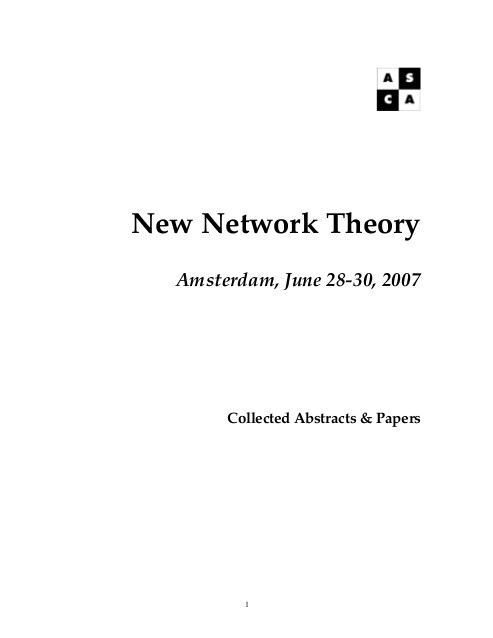Fibreculture journal, 18: trans (2011)
Filed under journal | Tags: · ecology, internet, media archeology, network culture, new media, software, tactical media, web
“It is now perhaps a commonplace that digital, networked and informational media are extremely transient. They diversify in form and function at a dizzying rate. At the same time, they transit and fuse “social” and “natural” differences in a manner which reconfigures all the worlds involved. It is also perhaps a commonplace to suggest that some established powers have found it difficult to come to grips with this (although this is perhaps beginning to change). For many, from seriously challenged newspaper proprietors to established media disciplines, it might be time to pause for breath, if only for a moment—to regroup and adapt established practices and ideas, to count the survivors from among the old media worlds of just a few years ago.
While occasionally sympathetic, issue 18 of the Fibreculture Journal questions this approach. If we pause for breath, it is to take in the new air. This issue draws on the accelerated evolutions of media forms and processes, the microrevolutions in the social (and even the natural sciences) that dynamic media foster, even the way in which “new” media lead us to reconsider the diversity of “old” media species. Summed up simply here under the sign/event of the “trans,” this issue catalyzes new concepts, accounts of and suggestions for new practices for working with all these processes.”
Articles:
Petra Gemeinboeck and Rob Saunders: Other Ways Of Knowing: Embodied Investigations of the Unstable, Slippery and Incomplete
John Tinnell: Transversalising the Ecological Turn: Four Components of Felix Guattari’s Ecosophical Perspective
Vince Dziekan: Anxious Atmospheres, and the Transdisciplinary Practice of United Visual Artists
Kristoffer Gansing: The Transversal Generic: Media-Archaeology and Network Culture
Christoph Brunner and Jonas Fritsch: Interactive Environments as Fields of Transduction
Troy Rhoades: From Representation to Sensation: The Transduction of Images in John F. Simon Jr.’s ‘Every Icon’
Michael Dieter: The Becoming Environmental of Power: Tactical Media After Control
Simon Mills: Concrete Software: Simondon’s mechanology and the techno-social
Fenwick McKelvey: A Programmable Platform? Drupal, Modularity, and the Future of the Web
Edited by Andrew Murphie, Adrian Mackenzie and Mitchell Whitelaw
Publisher Fibreculture Publications/The Open Humanities Press, Sydney, Australia, October 2011
ISSN 1449-1443
New Network Theory: Collected Abstracts and Papers (2007)
Filed under proceedings | Tags: · actor-network theory, aesthetics, assemblage, internet, locative media, network culture, networks, social movements, web, web 2.0

On 28 – 30 June 2007, the Institute of Network Cultures and Media Studies, University of Amsterdam and the Amsterdam School for Cultural Analysis, organized the international conference New Network Theory. The object of study has shifted from the virtual community and the space of flows to the smart mob. When the object of study changes, so may the distinctions that dominate, particularly the schism between place-based space and place-less space, both organized and given life by networks. New Network Theory explored contemporary network theory that suits and reflects the changes to the objects of study that come to define our understandings of network culture – a post-Castellsian network theory, if you will, that takes technical media seriously.
themes: network theory, the link, locative media, networks and subjectivities, networking and social life, art and info-aesthetics, actor-network theory and assemblage, networks and social movements, mobility and organisation, anomalous objects and processes, and the global and the local.
speakers: Katy Börner, Wendy Chun, Noshir Contractor, Florian Cramer, Rob Stuart, Jean-Paul Fourmentraux, Matthew Fuller, Valdis Krebs, Olia Lialina, Noortje Marres, Anna Munster, Warren Sack, Alan Liu, Ramesh Srini-vasan, Tiziana Terranova, Siva Vaidhyanathan, and many others.
PDF
Three additional papers (Verheij, Cramer, Goriunova)
Yochai Benkler: A Free Irresponsible Press: Wikileaks and the Battle Over the Soul of the Networked Fourth Estate (draft, 2011)
Filed under paper | Tags: · internet, journalism, mass media, network culture, networks, politics, wikileaks
A study of the events surrounding the Wikileaks document releases in 2010 provides a rich set of insights about the weaknesses and sources of resilience of the emerging networked fourth estate. It marks the emergence of a new model of watchdog function, one that is neither purely networked nor purely traditional, but is rather a mutualistic interaction between the two. It identifies the peculiar risks to, and sources of resilience of, the networked fourth estate in a multidimensional system of expression and restraint, and suggests the need to resolve a major potential vulnerability—the extralegal cooperation between the government and private infrastructure companies to restrict speech without being bound by the constraints of legality. Finally, it offers a richly detailed event study of the complexity of the emerging networked fourth estate, and the interaction, both constructive and destructive, between the surviving elements of the traditional model and the emerging elements of the new. It teaches us that the traditional, managerial-professional sources of responsibility in a free press function imperfectly under present market conditions, while the distributed models of mutual criticism and universal skeptical reading, so typical of the Net, are far from powerless to deliver effective criticism and self-correction where necessary. The future likely is, as the Guardian described its own experience with Wikileaks, “a new model of co-operation,” between surviving elements of the traditional, mass-mediated fourth estate, and its emerging networked models. The transition to this new model will likely be anything but smooth.
Working Paper of article forthcoming in the Harvard Civil Rights – Civil Liberties Law Review.
8 February 2011 version.
66 pages
PDF
Update: PDF (current version)

